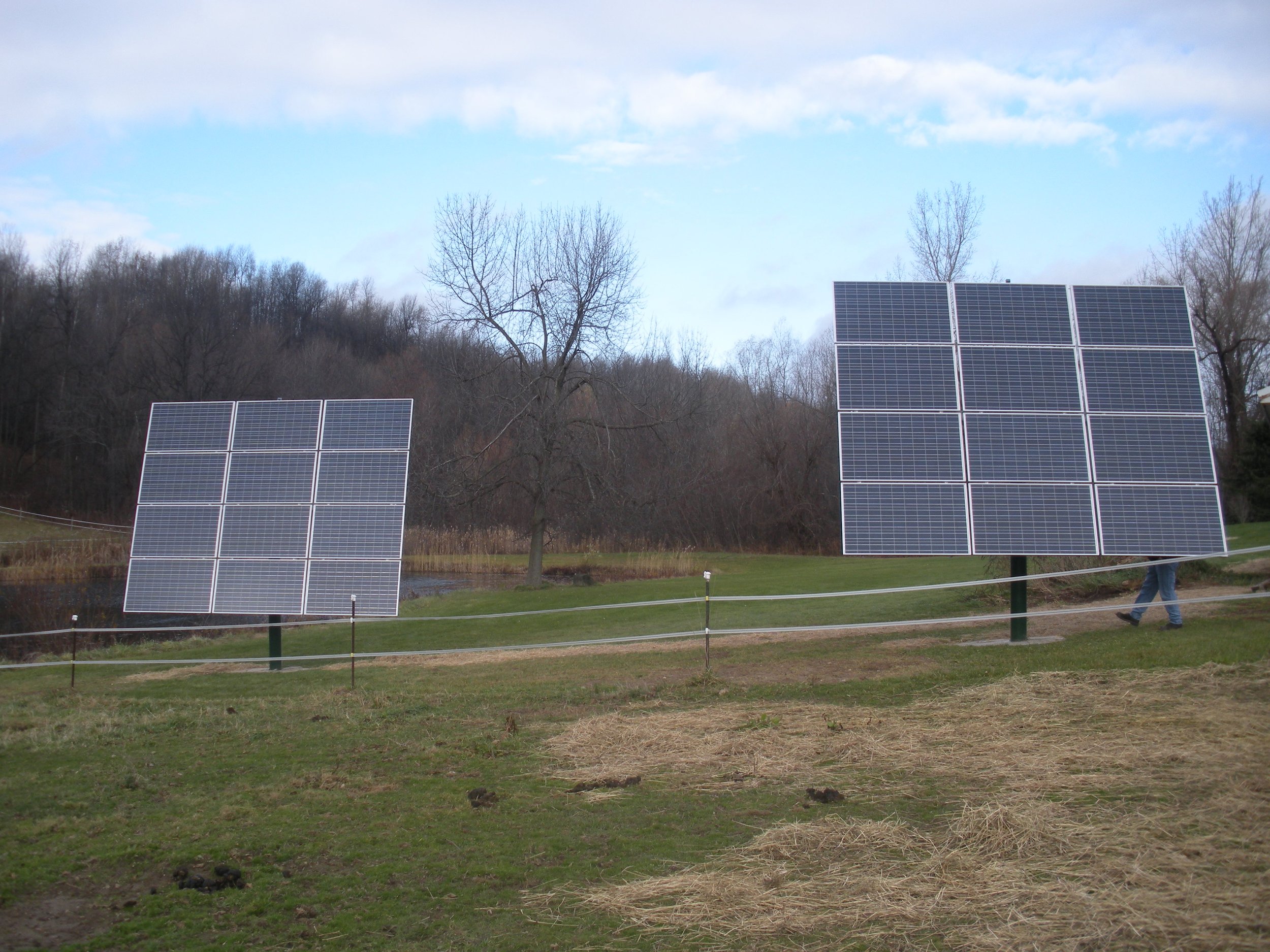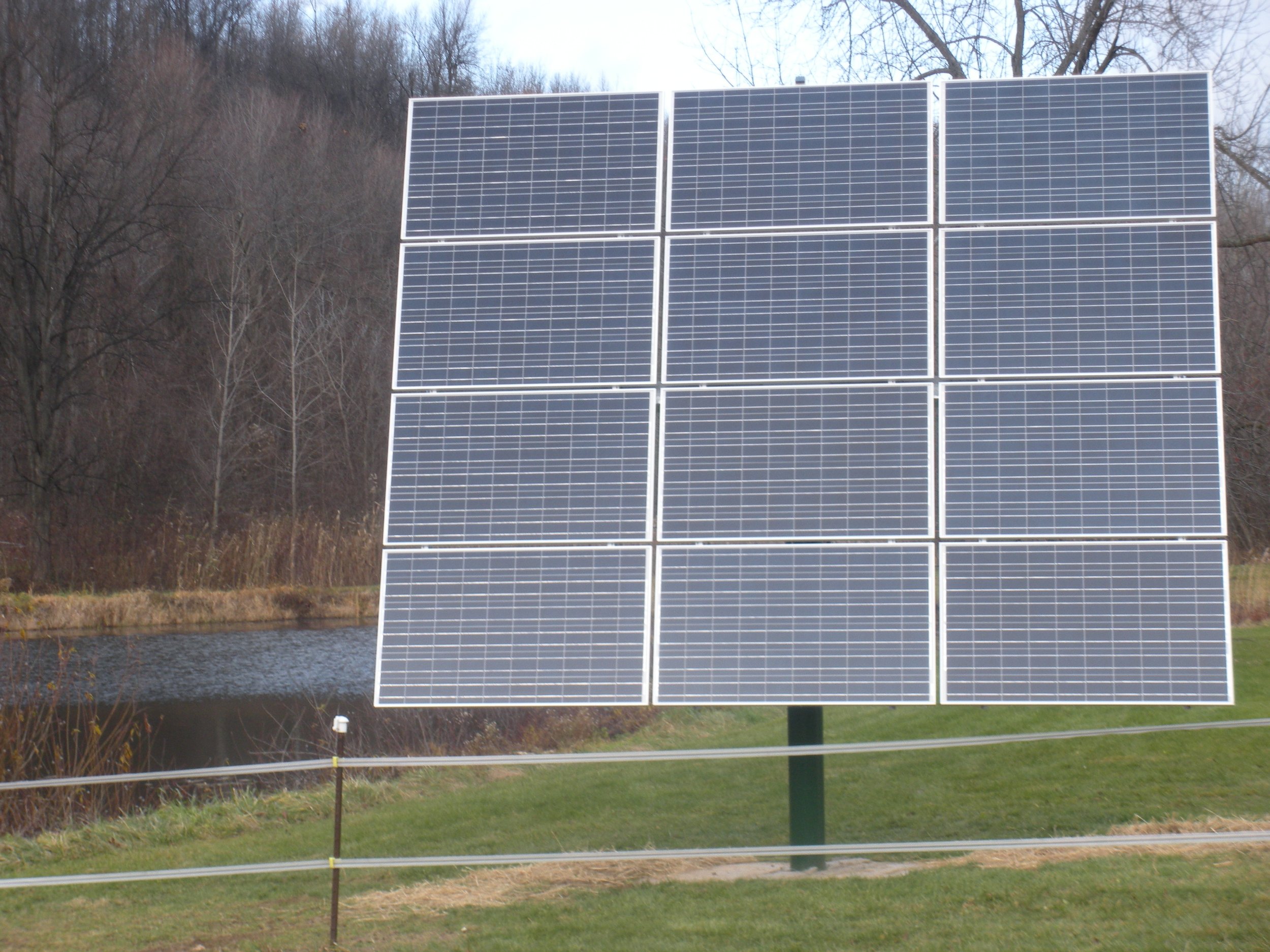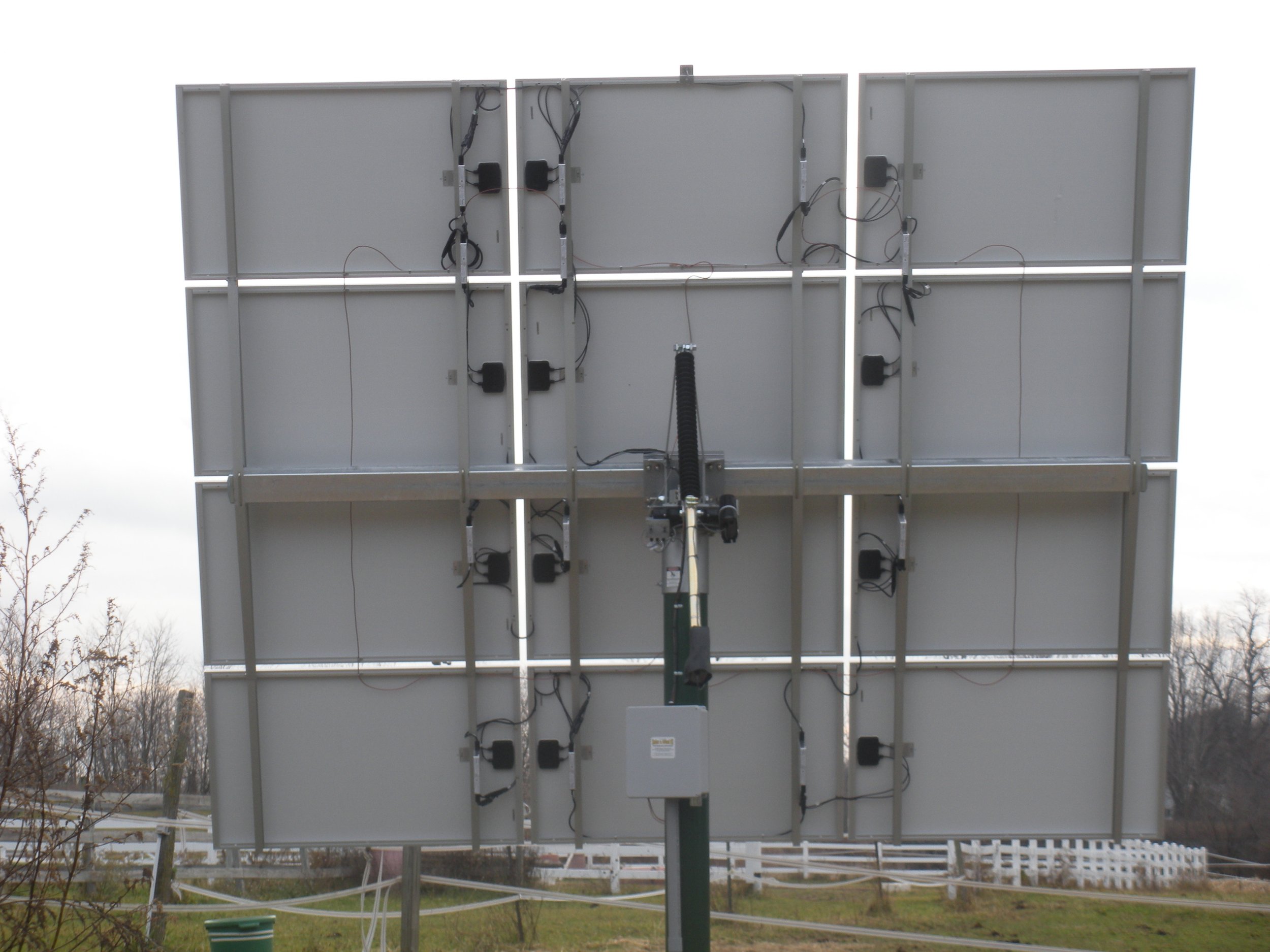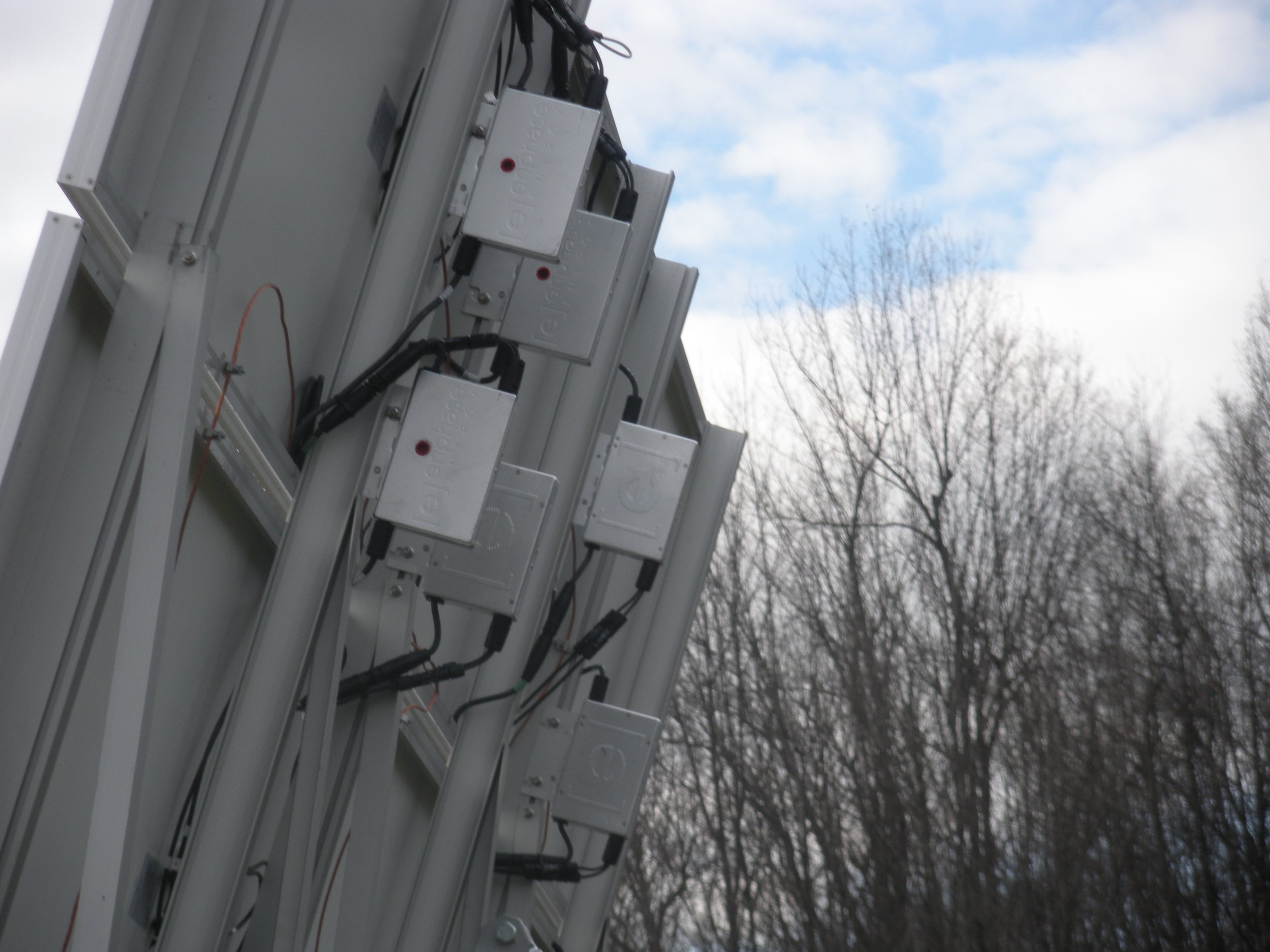Grid-tied Residential PV w/ Dual Axis Tracker
As we have stated elsewhere in this web site, we do not offer “one size fits all” systems. Instead we prefer to do projects that others generally won’t touch. The system below is located in Sodus New York and what makes this different is it is a Dual Axis (DA) Tracker and instead of the normal string inverter this system uses a separate inverter for each PV panel. More on this later.
This system consists of two DA Trackers, twenty four 230 watt PV panels equaling 5.52Kw output and 24 micro inverters. The two DA Trackers chase the sun light each day in an east to west transition as well as adjust to the elevation of the sun known as the azimuth. A single axis tracker on the other hand will only follow the sun east to west. You’d have to change the azimuth manually, generally at the midpoint of each seasonal equinox. Besides the increase in power output of the array by as much as 42% the other plus for our part of the country is that snow removal is almost always done by Mother Nature. While a DA Tracking system is more expensive than a fixed array, the benefits of the additional output provided from a tracker along without having to add additional PV, thus requiring more square footage, more Balance of System (BOS) components and more labor outweigh the additional cost. Now not all sites will be good candidates for a tracking system. That’s why we must do a site survey of your location before any components can be suggested.
As promised let’s discuss the string inverter vs. the micro inverter selected for this project. The inverter manufacturer used here is Enphase which is a very new idea to enter the Renewable Energy industry (2008). Normally with a string inverter we would have wired this project in two series strings. One string for each tracker would consist of 12 panels with a nominal voltage of the string being approximately 350 Vmp DC. Now understand that if any shading or soiling occurs the output of the single string will react in the same way that the flow of water through a garden hose would when being stepped on. Additionally it can be very difficult to detect if you have a single PV panel that is not performing to manufacturers’ specification. Now with the Enphase micro inverter when the above issues happen as with the string inverter only one PV panel would be affected, thus having a minimal effect on the overall systems output.
A link has been provide so that you can see what the output of each panel is any time of the day and look at the historical data as well: http://enlighten.enphaseenergy.com/systemslist. Once you have gone to the link select the up/down arrows of the cities to put them in alphabetical order and then scroll down and select the Sodus New York project. For public/commercial clients a kiosk in your main building can be added for public interaction and education.
Note in the picture the rectangular boxes with the small red circle. These are the inverters. They can be placed flat but the client and I decided to mount them this way because it allows the viewing of a “Status” LED from the ground. Now there is more labor required to install and I can tell you personally routing the cables to make them look nice took a great deal of planning and time. The client and I were both pleased with the looks and the output has thus far been better than expected.




